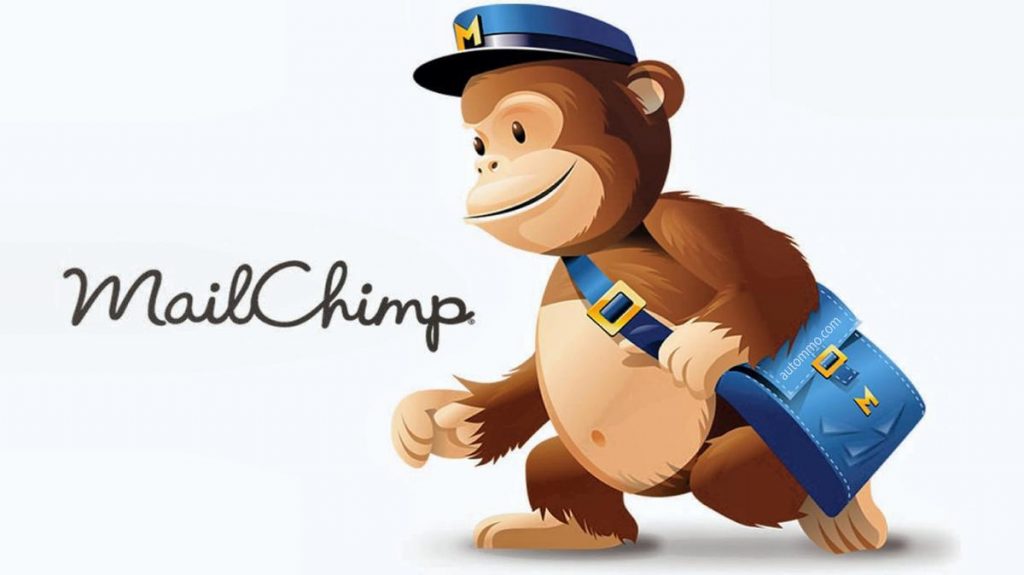Strap your Boots: 10 Bootstrapped Success Stories

Measuring the success of a company by the amount of venture capital raised is an increasingly widespread trend. “Successful” start-ups are often ranked by how much investment has been exchanged for equity during its lifetime, causing a herd behaviour that sometimes pushes a company’s valuation too high, only for it to spectacularly fail.
Venture Capital is often a life-saver for those companies with a high burn rate that need to spend a lot to build and scale a successful business model, but it is vital to remember that it is not the only path to success. Smart unit economics, efficient cash flow and a fair bit of creativity can help Founders scale their business without external funding, and without diluting their ownership.
Here we collected 10 exemplar bootstrapped companies that successfully employed different strategies to achieve impressive exits, sky-high valuations and more-than-healthy profit margins while retaining most of their Founders’ ownership. Some of these eventually went on to raise tens of millions from VCs, but this was when they were already at an advanced stage and their success was independent from external funding.
1) Automation is the key to economies of scale
If you are already offering a product or service which relies on your own time and work, there is usually room to grow, but not to scale: you can meet more demand if you hire more people, working at the same profit margin.
By contrast, finding a way to automate the workflow that is constraining the amount of product you are able to provide can propel your output to a whole other scale, with much larger profit margins.

This is how MailChimp was born in the year 2000.
Co-Founder and CEO Ben Chestnut was running a web design consulting business, when a stream of clients started asking for help designing emails and with other email marketing tasks. Email can be a tedious and time-consuming job for a designer, so – to save time – Chestnut built a tool to streamline the process. That tool gradually evolved to a $600m-revenue company that is used by millions of businesses worldwide.
He recalls getting excited when they would get two new clients in a day in the early stages. Now MailChimp gets around 14,000 new users per day. They are completely bootstrapped and focus on a cost-efficient model which ensures them a consistent profit, which is constantly reinvested to publish “at least one new key feature every year”. Chestnut says that starting with a model that was already profitable was vital in achieving their current position in the market.
However, it wasn’t always easy. Chestnut and his co-founder Dan Kurzius had not planned to run Mailchimp as a high-growth company, and it took them a year to figure out how to do that. Chestnut says that the key to succeeding over others is a “…a real test. You’re going to hit the storm of a lifetime.” At that point, it comes down to perseverance. “You don’t have be smarter than everyone else. Or all that much better,” he says. “You just have to hold on tighter. That’s what I’m good at.”
2) A capital-efficient product goes a long way in a small niche
Trying to disrupt a market is one of the most fascinating perspectives of starting an innovative business. Taking on huge companies armed only with a ground-breaking vision and huge amounts of drives is as endearing as it is hard, and expensive!
Think Uber, Arbnb and countless other notorious unicorns: they all succeeded in defeating the status quo, beating the odds against much larger and older corporations, but all of them have also struggled to be profitable for many years and needed constant and generous cash injections.
By contrast, tackling a specific gap in a niche industry can allow you to make a profit from the earliest stages and does not require as much capital to build a functional model.
SparkFun is not a famous company, unless you are into computer hardware hacking or an avid “maker”. In fact, it is this niche that engineering student Nathan Seidle targeted in 2003. When he broke a circuit board he realised how difficult it was to buy a replacement. He figured that other engineers in his same position might be facing the same problem, so he set up a website where he sold electronic kits and components, acting as the middleman between them and overseas sellers.
Eventually, SparkFun became one of the biggest player in the electronics retail sector – one that saw the defeat of incumbents such as Best Buy and RadioShack. SparkFun succeeded by meeting the needs of a well-defined niche willing to pay a premium in exchange for an easier purchasing experience, which allowed Seidle to be profitable from the start, bootstrapping his company to 150+ employees and $32m in annual revenues.
3) Solve an old problem with new tech
Solving an old problem with a new technology or UX layer can be enough to build a multi-billion-dollar business. That was the case for Shopify, which was originally built as a bespoke project by its founders, unable to find a suitable shopping cart solution.
Tobias Lütke was setting up an ecommerce site for snowboarders, and needed a flexible e-commerce solution that could be integrated with other services and offered flexibility in terms of design customisation. The problem was that previous technology did not allow for such a solution. A seasoned programmer, Lütke decided to code one himself using the Ruby on Rails framework, which at the time was fresh off its very first stable release.
It turned out to be a perfect solution for plenty more people, and the founders ran the business independently for six years on the revenue they generated. They ultimately raised money from VCs and later IPOed, which rewarded them with a £14bn valuation.
4) If you want it done right, then do it by yourself
The importance of a long-term strategy and business plan is undeniable, and it’s good to have high ambition about your business and what it might become. However, it’s important to be pragmatic and sometimes starting with whatever one can is the winning strategy for a successful business.
Skyscanner was born out of frustration of co-founder Gareth Williams, who spent hours searching for the best deals on airline websites in order to visit his brother in France. After a pub-brainstorming session with some university friends which would then become his co-founders, they drafted the main concept of their company on beer mats, and started out with a bespoke Excel spreadsheet comparing flight prices.
A few iterations later, Skyscanner employed 500+ across 10 offices worldwide. They kept the headquarters in Edinburgh, where they became the leading tech companies. They did not raise VC money until 2007, six years from their launch. They sold in 2016 to Chinese travel giant Ctrip for £1.4bn, keeping their operations independent to this day.
5) You don’t need to sell equity to raise money
Funding doesn’t always come millions of dollars at a time. Founders can scrape together money from grants, incubators or even pre-sales. Crowdfunding platforms and other pre-selling models allow companies to turn customers into a source of growth capital, receiving payments before even delivering the product.
Leveraging a passionate community, CoolMiniOrNot (CMON) started as a website where users could show off their hand-painted Dungeons & Dragons miniatures. Funder Chern Ann then decided to turn the website into a game design and distribution operation. Through a smart branding strategy and campaigns crafted with the same attention to detail as their miniatures, CMON ran 21 Kickstarter campaign, raising over $20.6m in non-dilutive capital. That’s as much as some companies raise by their Series B round, except CMON was always profitable and never gave away any of their equity.
6) Sell! Sell! Sell!
We already saw how customers can be the best source of funding for an early stage company. However, selling isn’t just the easiest way to raise working capital, it’s also a chance to gather user data and better understand customer needs.
Grammarly made themselves the perfect example of this principle by effectively “monetising backwards”. They started by marketing a bespoke version of their spell-checking products to universities and institutions. At the time, Grammarly’s spell-checker wasn’t much better than the Microsoft Word one, but they counted on institutional contracts which kept their revenue stream healthy from the start, and they collected data from their initial users – academic writers and students. They used both the initial revenues and the feedback to improve their product, which quickly surpassed the competition in quality.
When their grammar checker was good enough, they started marketing to a wider audience, with the more general purpose of helping people write better. At this point, they offered a free trial and a paid subscription. They eventually moved to a freemium model, which is based on a browser extension – bringing the product close to anywhere users write text.
In 2017, nine year after launch, Grammarly took in its first funding: a $110m Series A round. By then, their free extension already counted 10 million downloads and 6.9 million active users. It had also been profitable for years, while steadily doubling its revenue year after year.
7) Harness the power of marketing
Starting a business also means creating a new brand from the ground up. This can be a double-edged sword, as marketing can be a tricky and expensive activity at the earliest stages. But some companies turned it into their most effective weapon, building their whole business on a ground-breaking marketing strategy.
Cards Against Humanity was an absolute hit since its eight founders launched it commercially in 2011, with $15,700 Kickstarter funding and zero business experience. The provocative wit intrinsic tothe game was converted into a hip and underground brand image, pushed by canny marketing stunts including (but not limited to): selling cow poop, cutting up a Picasso, digging a big hole representing the ennui of a post-Trump America, then selling Trump “bug out” bags, and even asking for money on Black Friday when everyone else is selling out their products.
This sensible and smart management of their brand image earned the Cards Against Humanity team $12 million dollars in their first year, and this is not even their day job!
8) All about the cash burn
Startups are often measured by how much money they’ve raised, but it’s more important to consider how they spend. The best entrepreneurs orient their businesses around a technology or business model that is intrinsically more effective at multiplying capital. This is how Tough Mudder became a world-wide sensation.
“More than 3,000 people have the Tough Mudder logo tattooed on them” says co-founder Will Dean to show how much of a phenomenon his company has become. Perhaps more impressive, is the fact that it only started with £5,000 in savings and now earns over $100m in annual revenue.
It was all made possible by pre-selling registrations to races and then using the proceeds as working capital to actually build the obstacle courses that earned Tough Mudder its fame.
9) The power of community
Oftentimes, users and customers are your main asset. A passionate and faithful community that trusts you with the product they love can be just enough to build a literal billion-dollar business.
Mojang, the company behind Minecraft, never raised any VC, never employed more than 50 people and never switched its business model to the ubiquitous subscription-based plan. What they did was staying true to their affectionate community and maintaining their flat-fee model, which earned them almost a billion dollar in PROFITS before they sold to Microsoft for $2.5bn.
10) Solve the problems no one else wants to solve
It’s simple demand and supply: if you do what no one else does, you’ll get paid good money for it. That’s what companies like SurveyMonkey did to grow successful businesses without the need for external capital.
The online survey company was born in the dot-com bubble, but it was not as disruptive as some of its peers. Instead, it took care of the tedious, unsexy and somewhat dull job of offering an easy solution for publishing, distributing and analysing surveys online.
Not only did it survive the dot-com crash, but SurveyMonkey steadily bootstrapped itself growing to a nine-figure revenue, only raising $100m 11 years after its launch.
Don’t Design Your Business Around VC
This blog is in no way meant to discourage you to seek VC money. Venture Capital has powered some of the most ground-breaking innovation in recent history. The real message is: there is another way, one that starts with a working model and successful product and then seeks funding to fuel its growth rather than the opposite.
Building a business with little-to-no resources and being able to make a profit is the best pitch deck you could send to an investor.
The information available on this page is of a general nature and is not intended to provide specific advice to any individuals or entities. We work hard to ensure this information is accurate at the time of publishing, although there is no guarantee that such information is accurate at the time you read this. We recommend individuals and companies seek professional advice on their circumstances and matters.




